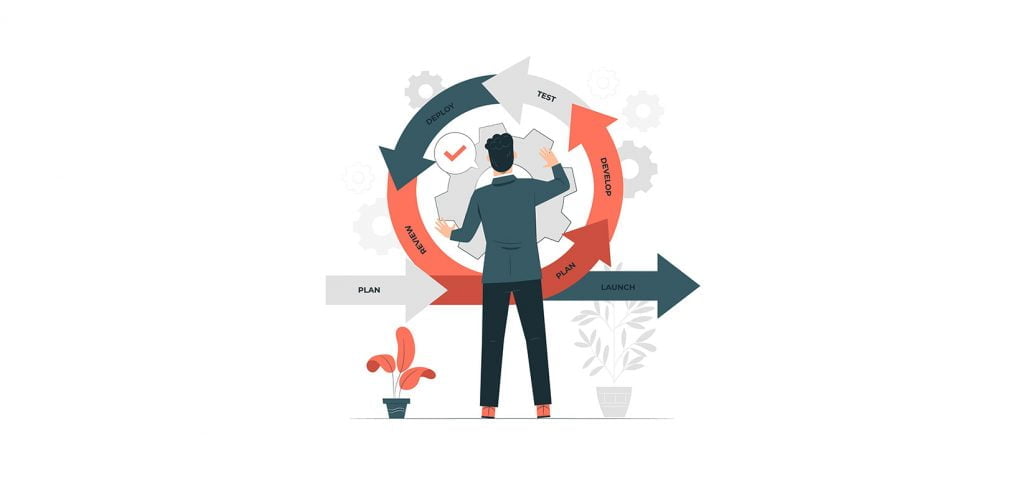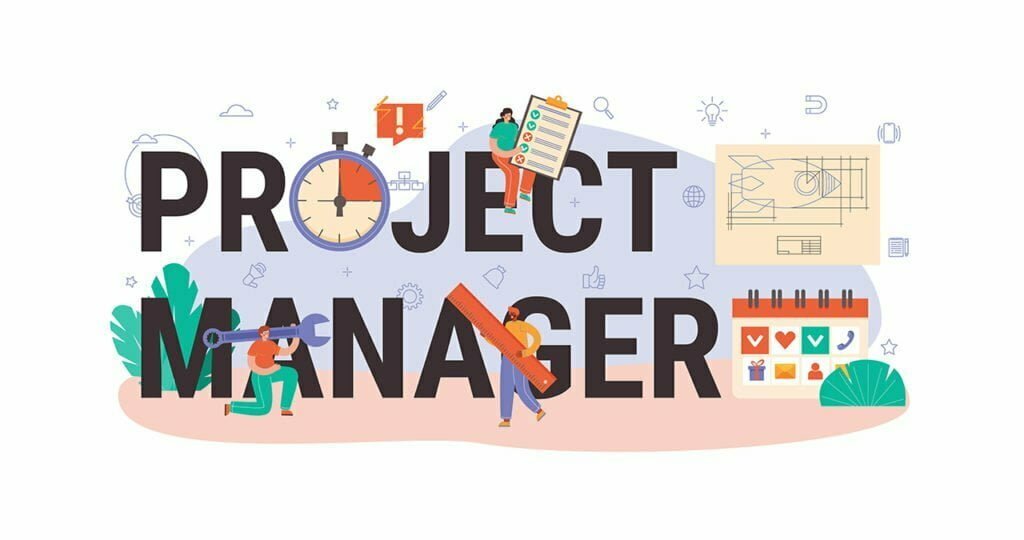Система управления Канбан. Что должен знать каждый IT-специалист

Давайте начнем с простого — что такое Канбан? В переводе с японского «Kanban» означает «видимая доска» или «видимые карточки». Данная система управления была придумана в компании Toyota в середине 20-го века как метод контроля производственного процесса. Сегодня Канбан — это де-факто стандарт в Agile и Lean управлении, который используется в разных отраслях, включая IT, как инструмент менеджмента над процессами, работами, проектами и командами.
В предыдущей статье мы рассказали о методологии Scrum, а сегодня познакомимся с тонкостями «Kanban».
Часть 1. История Канбан
В самом сердце японской промышленности, в 1940-х годах, компания Toyota столкнулась с большой проблемой. Она не могла эффективно конкурировать с американскими автопроизводителями, такими как Ford, из-за нерационального использования ресурсов и недостатка гибкости в производстве.
Именно тогда, ведущий инженер Toyota, Тайити Оно, придумал систему под названием «Kanban» (что в переводе с японского означает «визуальная карта» или «билет»). Он нашел вдохновение в американских супермаркетах, которые заказывали запасы, только когда они заканчивались на полках, вместо того чтобы накапливать их на складах.
Эта новаторская идея привела к созданию системы «только вовремя», которая уменьшала затраты на излишние запасы и увеличивала эффективность производства. Каждая деталь автомобиля была снабжена карточкой Kanban, которая указывала, когда, в каком количестве и какие компоненты следует произвести или доставить.
Спустя годы, концепция Kanban стала востребованной не только в автомобильной промышленности, но и в других отраслях, включая IT. В 2007 году, Давид Андерсон, специалист в области Agile-разработки, адаптировал принципы Kanban для управления процессами разработки программного обеспечения, что привело к появлению данной системы в IT.
Современные команды разработчиков используют Kanban для визуализации рабочих процессов, идентификации узких мест и улучшения продуктивности. Эта система позволяет сократить время на исполнение задач, повысить прозрачность рабочих процессов и улучшить взаимодействие в команде.
Таким образом, идея, зародившаяся в голове инженера японского автопроизводителя в 1940-х годах, теперь стала глобальной методологией, помогающей организациям в различных областях повышать эффективность работы и достигать своих целей.
Часть 2: Основные принципы
Сама идея Канбан основывается на визуализации рабочего процесса. Обычно это делается с помощью Канбан-доски, которая разбивает процесс работы на этапы (например, «Сделать», «В работе», «Готово»). Каждое задание представлено на карточке, которая перемещается по этапам в процессе выполнения.
Один из ключевых принципов Канбан — это ограничение количества работ, выполняемых одновременно (Work in Progress — WIP). Это помогает сосредоточиться на выполнении задач, а не на их накоплении, и сокращает время цикла от начала до конца задачи. Ограничение WIP улучшает качество работы и ускоряет процесс выполнения задач.
Управление потоком обеспечивает бесперебойное выполнение работы от начала до конца. Это достигается путем устранения препятствий и узких мест, а также балансировки нагрузки на команду.
Каждый этап рабочего процесса на Канбан-доске должен иметь четко определенные критерии для входа и выхода (политику). Это помогает устранить неопределенность и обеспечивает однородность выполнения задач.
Без измерения эффективности процессов невозможно их улучшение. Канбан использует такие метрики, как:
- Время цикла (Cycle Time): Это время, которое требуется для выполнения задачи от момента ее начала до завершения. Время цикла позволяет оценить скорость работы команды и предсказать, когда будут выполнены будущие задачи.
- Work In Progress (WIP): Количество задач, которые в данный момент находятся в работе. С помощью ограничения WIP команды могут предотвратить перегрузку и улучшить фокус на отдельных задачах.
- Пропускная способность (Throughput): Количество задач, которые команда выполняет за определенный период времени (например, за день или неделю). Эта метрика помогает оценить производительность команды.
- Время ожидания (Lead Time): Это время от момента, когда задача была сформулирована, до момента ее завершения. Время ожидания помогает понять, сколько времени клиенты должны ждать выполнения их запросов.
- Процент блокировки: Количество времени, в течение которого задача была заблокирована и не могла быть выполнена. Блокировка обычно происходит, когда для выполнения задачи требуются дополнительные ресурсы или информация.
- Среднее время восстановления (Mean Time to Recovery, MTTR): Эта метрика измеряет среднее время, которое требуется команде для восстановления после возникновения ошибки или сбоя. MTTR помогает определить эффективность команды в обнаружении и устранении проблем.
- Величина задач (Task Size): Эта метрика отражает размер задачи в терминах объема работы или времени, необходимого для ее выполнения. Измерение величины задач помогает лучше понять и управлять сложностью и продолжительностью работы.
- Стабильность процесса (Process Stability): Эта метрика отслеживает степень изменчивости процесса работы над задачами. Например, можно измерить количество изменений в количестве задач в работе или время выполнения задачи. Стабильный процесс помогает предсказуемо планировать и управлять работой.
- Процент готовности (Percent Complete): Эта метрика измеряет процент выполнения каждой задачи или функционального элемента в рамках проекта. Она позволяет команде и заинтересованным сторонам оценить степень завершенности проекта и определить, насколько близкий он к достижению цели.
- Скорость выполнения (Velocity): Это метрика, которая измеряет количество задач или единиц работы, которые команда может выполнить за определенный период времени. Скорость выполнения помогает в планировании и прогнозировании продолжительности проекта и оценке эффективности команды.
- Уровень удовлетворенности клиентов (Customer Satisfaction): Эта метрика отражает уровень удовлетворенности клиентов или пользователей с результатами работы команды. Она может измеряться с помощью опросов, обратной связи или других методов. Уровень удовлетворенности клиентов является важным показателем успешности проекта и качества работы команды.
- Процент выполнения сроков (On-Time Delivery): Эта метрика отслеживает процент задач или проектов, которые завершены в срок или раньше назначенного срока. Она помогает оценить пунктуальность и надежность команды в доставке результатов вовремя.
Важно выбирать метрики, которые наиболее соответствуют конкретным потребностям и целям команды. Комбинирование различных метрик может дать более полное представление о производительности и эффективности команды в контексте конкретного проекта.
Применение Канбан в IT
В IT Канбан применяется в различных областях, включая разработку программного обеспечения, управление проектами, поддержку и техобслуживание. Канбан-доска может быть простой (3 столбца: «Сделать», «В работе», «Готово») или сложной (много этапов и подэтапов), в зависимости от сложности процесса.
Канбан прекрасно сочетается с другими Agile-методологиями, такими как Scrum, XP и Lean. Например, в Scrum, Канбан-доска может использоваться для визуализации рабочего процесса внутри спринта.
Часть 3: Доска Канбан
Доска Канбан — это основной инструмент системы, который позволяет визуализировать рабочий процесс и управлять потоком задач. Он представляет собой диаграмму, разделенную на столбцы, каждый из которых представляет определенный этап работы.
Структура доски Канбан
- To Do (Бэклог): Список задач, которые нужно выполнить. Задачи в этом столбце еще не начались.
- In Progress (В работе): Задачи, которые сейчас выполняются. Количество задач в этом столбце ограничивается WIP-лимитом.
- Done (Завершено): Задачи, которые уже выполнены.
В зависимости от сложности процесса, могут быть добавлены дополнительные столбцы, например, «Проверка», «Деплой» и т.д.
Карточки задач
Каждая задача на доске Канбан представляется в виде карточки. Карточка обычно содержит следующую информацию:
| Информация | Описание |
|---|---|
| Название | Короткое описание задачи. |
| Описание | Подробное описание задачи, включая требования и критерии готовности. |
| Ответственный | Член команды, ответственный за выполнение задачи. |
| Сроки | Дата начала и конца выполнения задачи. |
Перемещение задач
Задачи перемещаются по доске от столбца «To Do» к столбцу «Done» по мере их выполнения. Важно, чтобы все члены команды следили за своими задачами и активно обновляли их статус.
WIP-лимиты
WIP-лимиты (Work In Progress) — это ограничения на количество задач, которые могут быть в столбце «In Progress» в любой момент времени. Они помогают предотвратить многозадачность и управлять потоком работы.
Визуальные индикаторы
На доске Канбан могут использоваться различные визуальные индикаторы для обозначения статуса задач, приоритетов, типов задач и т.д. Например, цвет карточки, значки, стикеры и т.д.
Использование доски Канбан
Доска Канбан является основой для ежедневных стендов (stand-ups) и других встреч команды. Она позволяет всем членам команды видеть текущее состояние проекта, понимать, над чем работают их коллеги, и принимать обоснованные решения.
- Планирование: Используйте доску Канбан для планирования работы. Задачи могут быть добавлены в бэклог по мере их появления, а затем распределяются по членам команды и перемещаются в столбец «In Progress».
- Работа над задачами: Члены команды работают над задачами, перемещая их от столбца «To Do» к столбцу «Done». Если возникают проблемы или задержки, они отмечаются на карточке задачи.
- Ревью и проверка: Когда задача завершена, она переходит в столбец «Done» и может быть проверена и протестирована. Если задача не удовлетворяет критериям готовности, она возвращается в столбец «To Do» или «In Progress».
- Ретроспектива: Используйте доску Канбан для анализа процесса работы и идентификации возможностей для улучшения. Обсуждайте, как задачи перемещались по доске, где возникали затруднения, и что можно сделать, чтобы улучшить процесс.
Помните, что доска Канбан — это живой инструмент, который должен быть адаптирован под специфику вашей работы. Не бойтесь экспериментировать и вносить изменения в структуру доски, правила перемещения задач и т.д. Главное — это чтобы доска помогала вам и вашей команде эффективно управлять работой и достигать своих целей.
Часть 4: Преимущества и недостатки системы Канбан
Введение в любую новую систему или методологию обычно сопровождается взвешиванием ее преимуществ и недостатков. Канбан не исключение. Хотя эта система обладает множеством преимуществ, она также имеет свои недостатки, которые важно учесть при принятии решения о ее применении.
Преимущества Канбан
- Визуализация работы: Доска Канбан делает рабочий процесс видимым для всех участников команды, что помогает лучше понимать, что происходит, и принимать обоснованные решения.
- Управление потоком работы: С помощью WIP-лимитов Канбан позволяет более эффективно управлять потоком работы и избегать многозадачности.
- Непрерывное улучшение: Канбан ориентирован на постоянное улучшение процессов, что позволяет команде постепенно становиться все более эффективной.
- Гибкость: Канбан не предписывает строгих правил и процедур, что позволяет командам адаптировать систему под свои специфические потребности.
- Снижение затрат на простой: Канбан позволяет оптимизировать рабочий процесс таким образом, чтобы минимизировать время простоя и увеличить производительность.
Недостатки Канбан
- Недостаточность для сложных проектов: Для больших и сложных проектов, требующих множества взаимосвязанных задач и детального планирования, Канбан может быть недостаточно структурирован.
- Трудности с приоритизацией: В Канбан отсутствуют формальные механизмы для определения приоритетов задач, что может вызвать проблемы в условиях большого количества задач и ограниченных ресурсов.
- Зависимость от культуры и вовлеченности команды: Успех внедрения Канбан во многом зависит от готовности команды к изменениям, ее вовлеченности и культуры непрерывного улучшения.
- Возможность перегрузки информацией: При неправильном управлении, доска Канбан может стать перегруженной и запутанной, что снизит ее полезность и прозрачность.
- Отсутствие долгосрочного планирования: Канбан сосредоточен на текущем состоянии работы, и в то время как он может эффективно справляться с текучкой работой и бэклогом, он не всегда идеально подходит для долгосрочного планирования.
Важно помнить, что выбор подхода к управлению проектами всегда должен зависеть от специфики конкретного проекта и команды. Канбан имеет множество преимуществ и может быть очень эффективным инструментом, но он не всегда может быть идеальным решением для всех сценариев. Оцените свои потребности, попробуйте разные подходы и найдите то, что наилучшим образом подходит именно вам.
Часть 5: Канбан-инструменты для IT-специалистов
Сегодня существует множество цифровых инструментов для работы с Канбан. Все они имеют свои особенности, преимущества и недостатки, и выбор инструмента зависит от специфики работы команды. Давайте рассмотрим пять популярных цифровых инструментов.
1. Trello
Особенности: Trello является одним из самых популярных и удобных в использовании инструментов Канбан. Он предлагает простую и интуитивно понятную доску, где задачи представлены в виде карточек, которые можно перетаскивать между колонками.
Достоинства:
- Простота использования
- Гибкость в настройке досок
- Возможность расшаривать доски и работать над задачами вместе с командой
- Интеграция с множеством других приложений и сервисов.
Недостатки:
- Отсутствие некоторых продвинутых функций управления проектами, таких как Gantt-диаграммы
- Бесплатная версия имеет ограниченный функционал.
Специфика применения: Trello подходит для небольших и средних команд, которым необходим простой и наглядный инструмент для визуализации своих процессов и задач.
2. Jira
Особенности: Jira — это мощный инструмент управления проектами, который часто используется в сфере разработки программного обеспечения. Он предлагает гибкие возможности настройки досок Канбан и поддерживает множество методологий управления проектами.
Достоинства:
- Мощные функции управления проектами
- Поддержка Scrum и Канбан
- Возможность внедрения сложных рабочих процессов и правил.
Недостатки:
- Высокий порог вхождения и сложность в использовании для новичков
- Высокая стоимость для больших команд.
Специфика применения: Jira идеально подходит для больших команд разработки, которым требуются сложные рабочие процессы и мощные функции управления проектами.
3. Asana
Особенности: Asana — это гибкий инструмент управления задачами и проектами, который поддерживает визуализацию в формате Канбан. Она также предлагает множество других представлений задач, таких как списки, календари и Gantt-диаграммы.
Достоинства:
- Гибкость представления задач
- Интеграция с другими популярными инструментами, такими как Slack, Google Drive и Microsoft Teams
- Поддержка создания и использования шаблонов для проектов.
Недостатки:
- Отсутствие детального контроля над правами доступа в бесплатной версии
- Сложности в освоении для новых пользователей.
Специфика применения: Asana подойдет для команд, которые ищут универсальный инструмент управления задачами, который поддерживает различные методы визуализации работы и сотрудничества в команде.
4. Kanbanize
Особенности: Как следует из названия, Kanbanize — это инструмент, специально разработанный для работы по методологии Канбан. Он предлагает множество функций для эффективного управления рабочими процессами и для более глубокой аналитики.
Достоинства:
- Многоуровневые доски Канбан для сложных проектов
- Встроенные инструменты для аналитики и отчетности
- Поддержка автоматизации рабочих процессов.
Недостатки:
- Более высокая стоимость по сравнению с некоторыми конкурентами
- Отсутствие бесплатной версии.
Специфика применения: Kanbanize идеально подойдет для больших или сложных проектов, где нужно глубокое понимание процессов и мощные функции аналитики.
5. ClickUp
Особенности: ClickUp — это всеобъемлющий инструмент управления проектами, который включает в себя не только доски Канбан, но и списки задач, Gantt-диаграммы, документы и многое другое.
Достоинства:
- Широкий набор функций для управления проектами
- Гибкость в настройке рабочего пространства и досок
- Богатые возможности по интеграции с другими инструментами.
Недостатки:
- Некоторые функции могут быть излишними для небольших команд
- Слишком много функций и возможностей может усложнить процесс освоения для новых пользователей.
Специфика применения: ClickUp подходит для команд, которые нуждаются в мощном и всеобъемлющем инструменте управления проектами. Он подойдет для сложных проектов с большим количеством участников и сложными рабочими процессами.
Как выбрать подходящий инструмент для вашей команды
Выбор инструмента Канбан — это очень индивидуальное дело, которое зависит от множества факторов: размера команды, специфики проекта, бюджета и т.д. Но независимо от того, какой инструмент вы выберете, важно помнить, что самый главный ресурс в любом проекте — это люди.
Инструменты помогают нам организовывать работу и делают процессы более прозрачными и управляемыми, но истинный успех проекта зависит от команды, от ее умения работать вместе и стремления к общей цели.
Заключение
Система управления Канбан доказала свою эффективность не только в производстве, но и в IT. Она помогает визуализировать процесс работы, управлять потоком задач, оптимизировать процессы и постоянно их улучшать. Безусловно, важно учесть все «подводные камни» и трудности, которые могут возникнуть при внедрении Канбан, и стремиться к активному вовлечению всей команды в процесс.
Возможности и перспективы использования этой системы в IT практически не ограничены. Это может включать более сложные и гибкие модели работы, интеграцию с другими Agile-методологиями, использование продвинутых метрик и инструментов и т.д. Не стоит останавливаться на достигнутом и всегда искать способы улучшить свои процессы.
Помните, что Канбан — это не решение всех проблем, а инструмент, который помогает видеть проблемы и улучшать процессы. Используйте его мудро, будьте открыты для экспериментов и постоянного обучения, и тогда Канбан станет мощным союзником в ваших стремлениях к эффективности и непрерывному улучшению.






 , а затем
, а затем
Комментарии